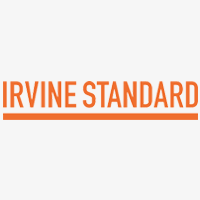Media Watch Archives
UC Irvine sand study shows new data to help manage shrinking beaches
The Orange County Register -
A new paper published recently by UC Irvine researchers in the Coastal Engineering Journal analyzed beaches between Long Beach and La Jolla, offering new data and methods that can be used to figure out the most vulnerable areas of coastline and whether those beaches are suitable for the mega, costly projects often turned toward for trying to replenish and retain sand. … “I’m really excited to have the resources that help, potentially, inform these decisions,” said Daniel Kahl, UCI researcher and lead author of the paper. … “The data essentially shows: Where do we get the most bang for our buck when it comes to placing sand on the coast,” said Brett Sanders, UCI civil and environmental engineering professor and co-author of the published paper. Read More
During LA's historic rain, river was 'doing exactly what it was engineered to do'
SFGate -
Experts have also found that the [LA] river’s flood protection abilities need shoring up, especially as the region sees more intense storms due to climate change. One 2022 study from the UC Irvine Flood Lab found nearly a million people are exposed to flooding during a 100-year storm event, with the most intense impacts on cities along the southern part of the river, like Bell Gardens and Compton. Read More
With the state mandating zero emissions, Bay Area agencies are split on hydrogen vs. electric
The Mercury News -
According to Jack Brouwer, director of the National Fuel Cell Research Center and the Advanced Power and Energy Program at UC Irvine, deciding the right number and type of zero-emission buses depends on many factors, including the electrical grid infrastructure, the bus routes, and the road type. Battery electric buses, for example, consume more power on hilly roads. Read More
California’s Flood Defenses Held This Time, but They Are Weakening
The Wall Street Journal -
“The infrastructure is optimized to move water quickly to the ocean, and it did its job,” said Brett Sanders, a professor of civil and environmental engineering at the University of California, Irvine. “But had we had another storm right after that, we might have gotten close to the limits of that system.” A 2022 report from UC Irvine determined that a 100-year flood event in Los Angeles would expose more than 400,000 people to danger, with property damage of more than $50 billion, comparable to that of a major hurricane. Read More
How California’s storms are projected to become more extreme with climate change
Los Angeles Times -
“Higher rain over snow ratio, faster snowmelt, and more intense storms can significantly impact water resource management in California,” said Amir AghaKouchak, a UC Irvine professor of civil and environmental engineering. “A shift toward more intense rain, as opposed to snow, will strain an already water-challenged environment to its limit.” … In a 2022 study, researchers at UC Irvine found that in the Los Angeles Basin, nearly 1 million people live in areas that could be threatened in a 100-year flood, and that Black and low-income communities are especially vulnerable. Read More
Climate change will bring megafloods to California
BBC -
"San Diego flooding two weeks ago showed again that disadvantaged communities bear the brunt of flood impacts when infrastructure is overtopped," says Brett Sanders, professor of civil and environmental engineering at the University of California, Irvine. "If this storm ends up causing mainstem flood channels to overtop, then once again there will be low-income communities impacted, leaving people scrambling to salvage their belongings and find a place to live while not losing their job from missed work." Read More
L.A.’s flood-control system survived epic storm. But it’s losing battle with climate change
Los Angeles Times -
Scientists suggest that epic storms to come will challenge the county’s aging flood-control system. A recent UC Irvine study suggests that a 100-year flood — a deluge that has a 1% chance of occurring in any given year — could rapidly overwhelm the area’s principal waterways: …. “All we initially wanted from the infrastructure was economic development and safety from flooding,” said Brett Sanders, a professor of civil and environmental engineering at UC Irvine and co-author of the study published in the scientific journal Nature Sustainability. “So, what we’ve got are concrete race tracks that sweep water into the Pacific Ocean as quickly and efficiently as possible.” Read More
Why record rain hasn’t washed away California’s water woes
The Washington Post -
More places will have to develop robust programs to restore groundwater that provide multiple “access points” for surface water to seep into the aquifer, University of California, Irvine civil engineer Brett Sanders said. Large basins serve as primary access points for groundwater to filter downward, holding large amounts of runoff and recycled wastewater that trickle into aquifers. Communities also must add smaller green spaces to improve storage and prevent flooding by helping more water get into the ground, he said. Read More
UCI engineers unlock the secret behind nature’s most effective camouflage
Irvine Standard -
With a twitch of its muscles, the tiny, venomous greater blue-ringed octopus, native to the warm waters of the Western Pacific and Indian oceans, changes the iridescent circles on its surface according to its intentions. … A group of UC Irvine engineers was so intrigued by this survival mechanism … that they created a device that recreates it. … “I like to think of it as bio-inspiration,” says Alon Gorodetsky, an award-winning professor of chemical and biomolecular engineering and the paper’s lead author. … The Irvine scientists’ octopus-inspired device resembles a small, four-layered sandwich, says co-lead author Preeta Pratakshya, who recently received her Ph.D. from UCI’s Department of Chemistry. Read More
The Fingerprints on Chile’s Fires and California Floods: El Niño and Warming
The New York Times -
Brett F. Sanders, an engineering professor at the University of California, Irvine, who focuses on flood management, said atmospheric river events like the one hitting the state now have been predicted by climate models and are presenting urban planners with new challenges. “The mentality of the past was that we could control floods, and contain where flooding happened. And outside of that, communities and businesses and residents could kind of go about what they do, and not think about floods,” Dr. Sanders said. “But we know now that, around the U.S., we’re seeing that infrastructure is undersized to contain the extreme weather of today.” Read More










